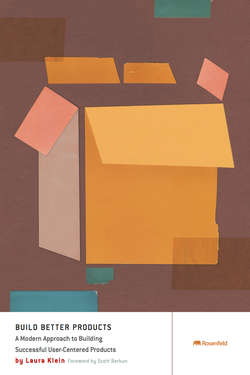Читать книгу Build Better Products - Laura Klein - Страница 82
На сайте Литреса книга снята с продажи.
User vs. Product
ОглавлениеFirst, do you want to learn about your users or your product? Of course, the real answer is that you want to learn about both, but for the purposes of the first thing you’re learning, is it more about your user or your product?
FIGURE 3.2 Write one research topic per sticky note.
What does it mean to learn about your user? Remember the topics earlier? The second and third topics are user topics. They’re asking questions about someone’s life or the problems that they encounter in the context of trying to perform their work.
• I want to know the top problems that computer programmers have when looking for a new job.
• I want to know how recruiters meet new computer programmers and figure out if they fit the profile of a specific job.
User research is about the user. Hence, the name. It tells you how they live, what they like, how they work, and, most importantly, what sorts of problems they’re experiencing in their everyday lives that you can solve for them. User research methodologies tend to be ethnographic in nature. They often take the form of long-form interviews or in-home visits or observational sessions where you get to know who the person really is as well as why they’re using your product.
It is particularly necessary at the beginning of your product development when you’re just learning about your user and figuring out what sort of thing to build for them. This is how you get to know your potential customers and begin to narrow down which groups of people are the most likely to want your product.
Product research, on the other hand, is the sort of thing you do after you already have a very good understanding of the person for whom you’re building a product. It helps you understand the problems associated with the use of your actual product. It includes things like usability studies where the goal is to figure out where you’re putting obstacles in the way of customer success, but it could also include research with ex-users to understand why they left or observational sessions with current users to see the process they go through while using your product.
These are product topics:
• I want to know if people can successfully post a job listing using my new design.
• I want to know why so many people start the registration process in my product but then stop.
• I want to know how many people successfully register and search for at least one job using my product.
• I want to know how often and at what times people check their job listings.
If someone can’t understand how to post a job using your product, that’s a potential issue with your usability. How many times a day somebody checks a job listing will give you some insight into the context in which people are interacting with your product. How far people get into the registration process gives you insight into potential friction with new user sign-up. All of these topics are about your user’s interactions with your product.
When you’re thinking about product research, usability testing is probably the methodology that’s most familiar. It’s specifically designed to show whether users can perform certain, key tasks with your product.
But product research is about more than just specific problems in tasks. Product research can also show you where your product has feature gaps or isn’t completely solving the user’s problem in a compelling way. We’ll get to that later.
For now, all you have to do is answer this question for your first research project: do you want to learn about your users? Or your product?
After you’ve decided, go ahead and put a P or a U on each of your sticky notes to indicate whether the topic is a product or a user one (see Figure 3.3).
FIGURE 3.3 Mark each topic as Product or User.
